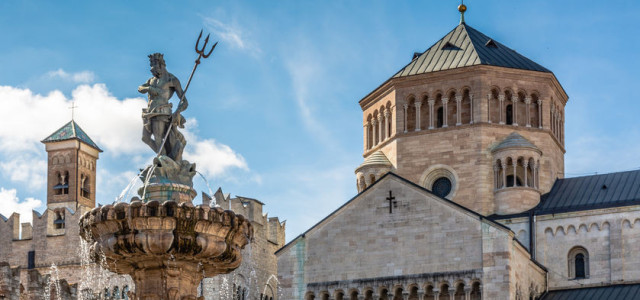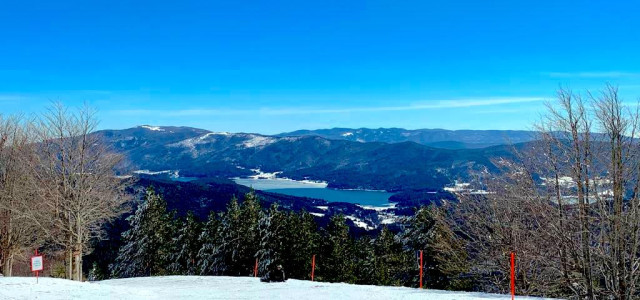Traveling to Oristano: the must-see’s
It is a location that is rich with monuments and historical buildings. It also offers numerous natural wonders - first of all: the Tirso river - the most imposing of Sardinia regarding length and basin size. But with its churches, Oristano gives us its best ...
Summary
The Cathedral of Oristano (the Church of Santa Maria Assunta)
The cathedral - before it became such - was promoted to the rank of minor basilica by Pius XII. Inside, several heterogeneous elements coexist: elegant baroque schemes that alternate with neoclassical forms, and even more contemporary styles. It contains extraordinary treasures of the art such as: the wooden statue of the Annunciation; the marble statue of the Madonna del Rimedio; a baroque altar that has a canvas with rounded shapes depicting the Assumption; two rectangular paintings depicting the Adoration of the Magi and the Supper; as well as many sacred vestments and ancient silverware. It's definitely something worth seeing on a trip to Oristano.
The Tower of Mariano II
After visiting the church of Santa Maria Assunta, the historical center of the city should definitely be your next stop. Here it is possible to admire the ancient Tower of Mariano II. It ancient times, it was known as "de Port'e Ponti" - since it made way to the bridge located on the Tirso river - or even "Torre di San Cristoforo”.
The Tower of Mariano II was originally a fortress that stood proud, harmonizing perfectly with the city walls to which it was united. Today, however, it stands alone in the central part of Piazza Roma, without the walls that once protected the city and which at one time constituted an integral part of this place. Over time they have been lost.
The northern entrance of Oristano was erected along with the city walls thanks to Pisan craftsmen and by the will of Judge Mariano II.
During the times when the Carnival took place, the Tower of Mariano II becomes the protagonist of one of the biggest events in the city that brought the community together. During the "Sa Sartiglia" the tower became one of the most fascinating places where riders competed in an equestrian carousel.

The Church of San Francesco and Church of Carmine
There are some other places that should definitely not be overlooked. They are also located in the historical center of Oristano: the neo-classical church of San Francesco and the Church of Carmine.
The first is located in Via Sant’Antonio and is managed by the Franciscan friars who live in the convent. The friars belong to an order that founded the church and the nearby convent in 1253.
The sacred building houses, among other things: the Christ of Nicodemus; a fine wooden sculpture dating back to the 14th century from the Spanish school; and the prototype of a series of crucifixes that are placed in different churches in Sardinia - among which the wooden Crucifix by Ollolai. In the sacristy there is also a panel depicting St. Francis receiving the stigmata (by Pietro Cavaro), and the marble statue that most probably represents St. Basil the Great (by Nino Pisano).
The Church of Carmine is also located in the historical center - precisely in Via del Carmine. The building is of small dimensions and was built by the Piedmontese architect Giuseppe Viana. It is considered by most to be the greatest expression of Rococo style in all of Sardinia. Both the church and its convent were desired and financed by Don Damiano Nurra - the Marquis of Arcais who then gave them to the Carmelites. The convent hosted the Command of the Carabinieri and today has become the site of many cultural events.
The Monastery of Santa Chiara
If you are looking for a deeply spiritual place - the Monastery of Santa Chiara is the one for you. The structure - which still maintains its original features - has long been home to the Poor Clares. They are completely immersed in the mystical experience of prayer and with the small simple gestures that characterize their daily lives.
Piazza Eleonora d’Arborea and Palazzo degli Scolopi
This square is perhaps the most important in the arboreal city. It is located in the historicalcenter and has maintained its classical charm since the first half of the nineteenth century.
Within the piazza you can find some of the most notable buildings in Oristano such as: the Palazzo degli Scolopi which was financed at the time by a wealthy local merchant named Michele Pira and desired by the Jesuits who wished to turn it into a school. Today it is the headquarters of the Municipality of Oristano.
Corrias - Carta Palace - and the statue of Eleanor of Arborea
Palazzo Corrias - Carta is the former Oristano municipal headquarters. It was built in the mid-1800s by the noble Giuseppe Corrias on the final stretch of Corso Umberto that joins Piazza Eleonora d’Arborea. In its central part, you can find an ancient monument dedicated to Eleonora Arborea.
The academic and celebratory work was credit of two Florentines: the sculptor Ulisse Cambi and the architect Mariano Falcini. The statue of the Judicess - who probably died of the plague in the Judicial Middle Ages - was inaugurated on May 22nd 1881.
Last but not least, the Antiquarium arborense is certainly worth seeing. It contains the entire archaeological collection of the lawyer Pischedda and was acquired by the Municipality of Oristano in 1938.
In the photo you can see the statue of Eleonora d 'Arborea located in the square that has the same name
Reproduction reserved © Copyright Altrama Italia
![Immagine descrittiva - BY [maxvan23/123rf] Immagine descrittiva - BY [maxvan23/123rf]](https://api.viaggiart.com/resources/images/xl/list/image/172185-a4a4295fa7540cf8f7e006f5f0b6f940-1568651953.jpg)






